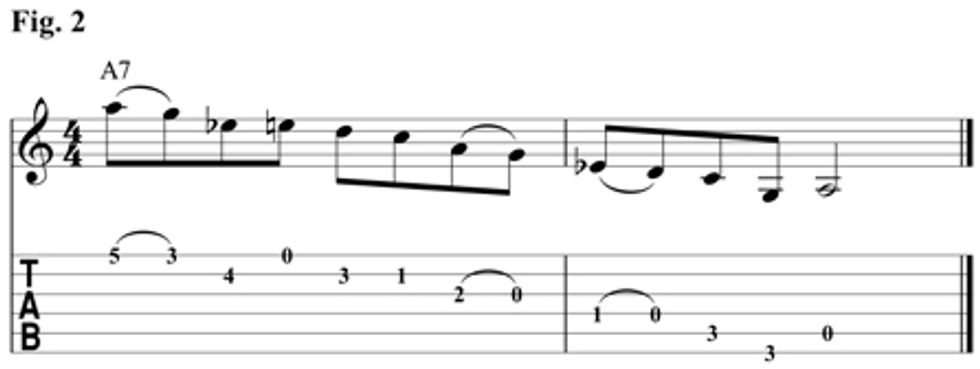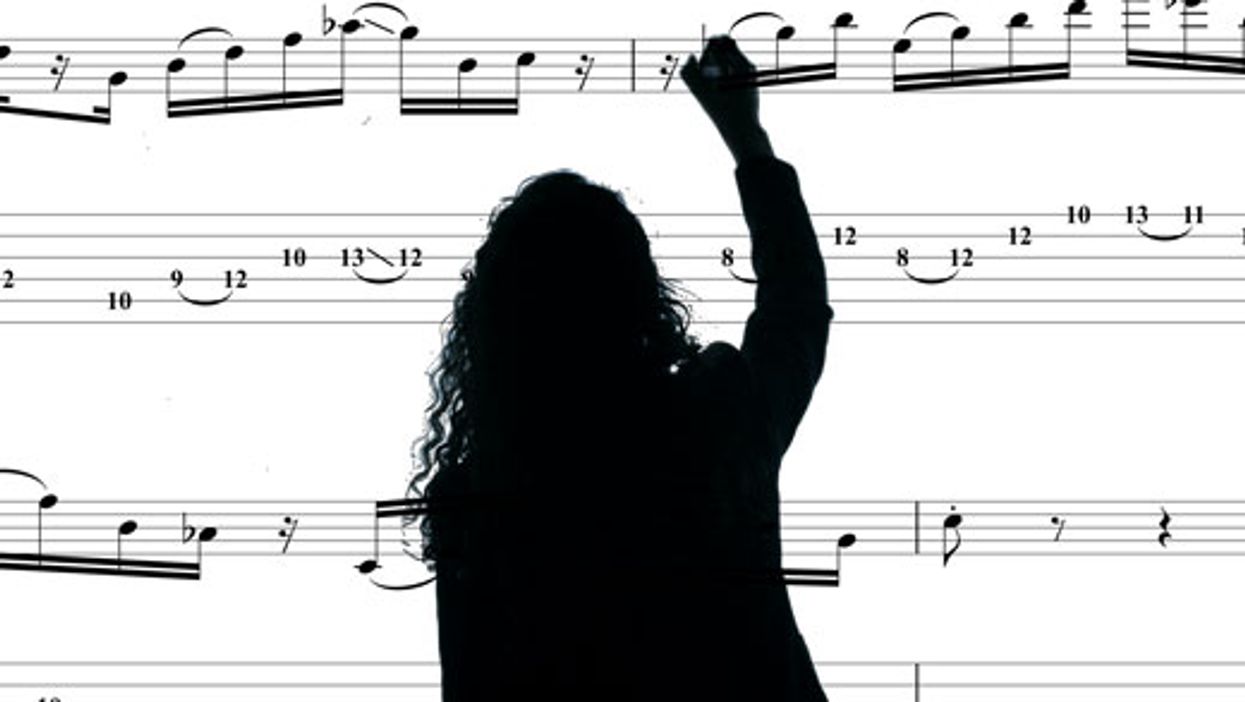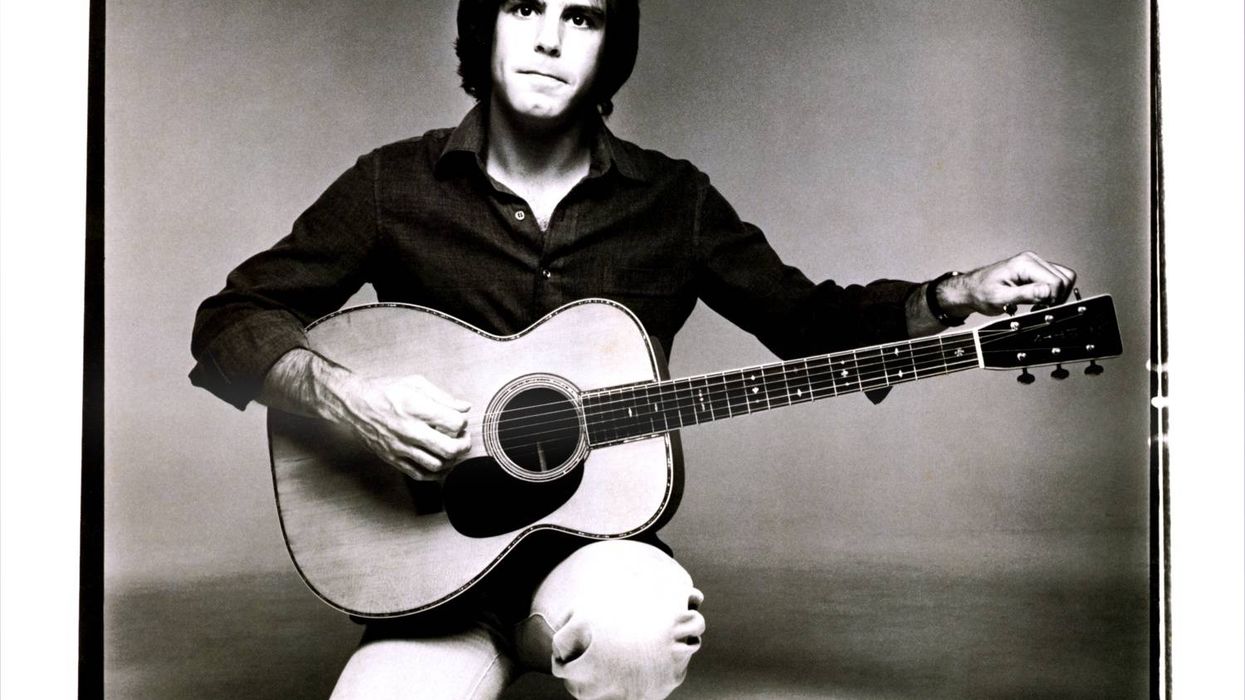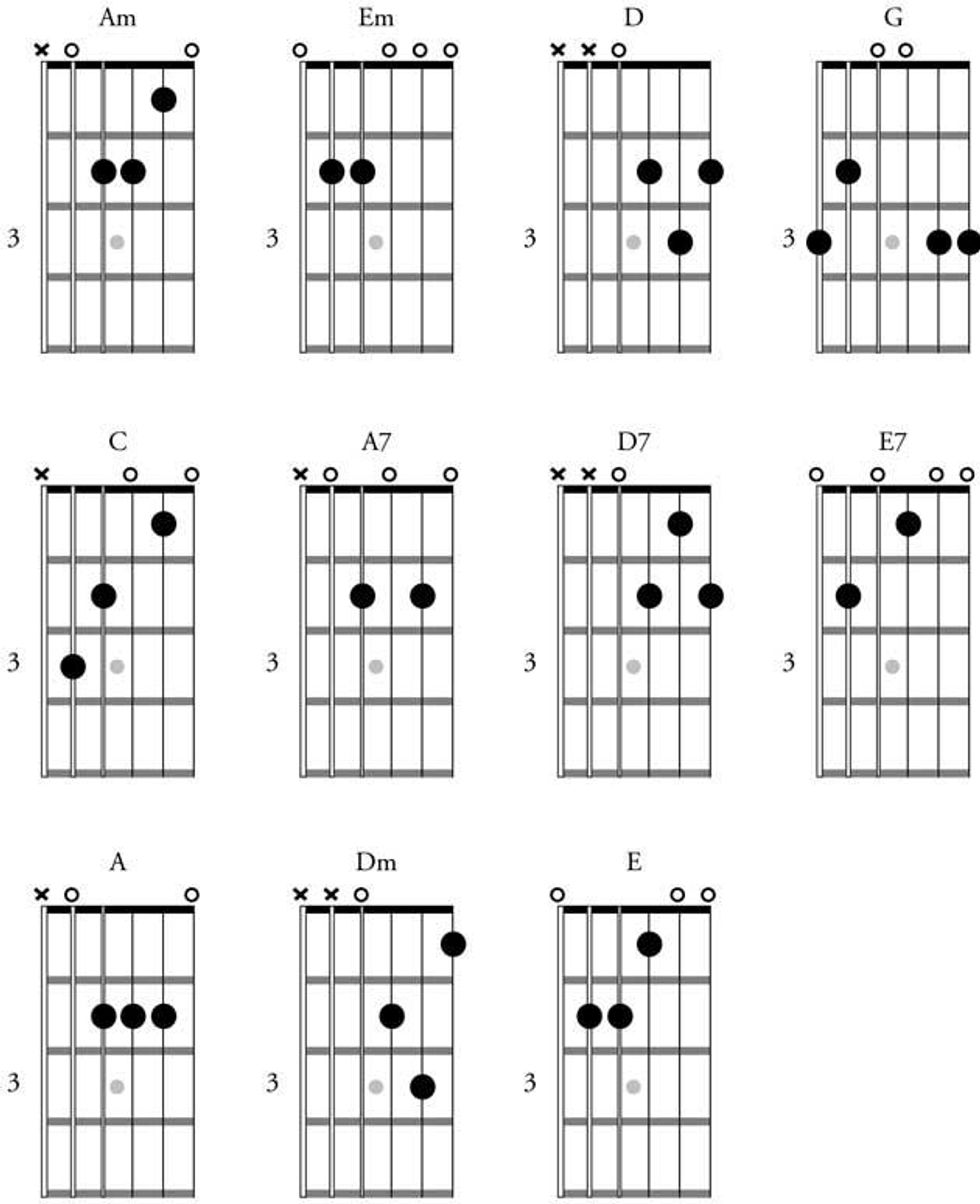| Chops: Intermediate Theory: Beginner Lesson Overview: • Combine blues scales with basic country guitar techniques. • Create cascading phrases that include dissonant notes. • Learn how to use double stops effectively in a solo. |
| Print it! Click here to download a high-resolution, printable PDF of the notation. |
Let's face it, one of the most appealing aspects of soloing with the blues scale is that you can sound pretty darn good over most tunes without "playing the changes.” In other words, not addressing each new chord as a new tonal center. Now that's not a knock to the blues. This can actually make it harder to say something original. Not to mention, a player’s emotional commitment becomes even more transparent. Some of you may only know the blues scale or the minor pentatonic scale. No problem. While it's great to keep expanding your vocabulary, a lot of music can be made with just those scales. What I'm trying to say is it's not what you have but how you use it.
Below are four blues licks with four different approaches. Each lick will combine the blues scale with a country guitar technique. The idea here is that you don't just walk away with four cool new licks but four cool new concepts.
Country guitarists love us some double stops. Double stops is a fancy way to say two notes at once. This a technique country guitarist probably adapted from fiddle players. This lick in Fig. 1 is in the key of D and is based off of the the blues scale. Now they are two ways you can play these double stops–pick and middle finger or grab with the middle and ring fingers. Both sound good and will achieve the desired effect. In the audio example, I'm mixing these two approaches.
or download example audio

I start off by sliding into the root and b5 from a half step below then continue moving up the D blues scale in double stops until I reach the root and fifth on the top two strings. Now barre across the 1st, 2nd,and 3rd strings at the tenth fret to set up a pull off and place the pinky on the thirteenth fret of 3rd string. I'm picking the third string and grabbing the first string at the tenth fret with my middle finger at same time. Start your pull off down to the tenth fret. From here, I walk down the scale and tag the lick with a couple straightforward double stops. This leads us into a little chicken pickin’. Place your pinky on the D at the twelfth fret. This note will not change for the next couple double stops. Between each double stop I release tension in my fretting hand to achieve the muted sound.
The lick in Fig. 2 uses open strings and takes advantage of some of the dissonances achieved by letting notes ring into each other. This lick is based out of the A blues scale. The key here is to hold each note as long as possible in order to create a ringing, harp effect. Also, make sure the pads of your fingertips aren’t touching the neighboring strings.
or download example audio

We head into Western swing territory with Fig. 3. We use some major 6th voicings in order to imitate a lap steel guitar. I love how simple this one is. You don't have to change the chord shape at all. Just move it horizontally through the notes of a G blues scale.
or download example audio

The lick in Fig. 4 is based out of the B blues scale. Here, we will use some chicken pickin’ and palm muting to help bring it into the world of twang. I start with a double stop on the top two strings with my middle and ring fingers. When I get to the third string I throw in some chicken pickin’. I'm picking the root (B) then releasing the tension in my fretting hand and plucking the muted string with my middle finger then end with picking the root (B) again. The muting for the rest of the lick is done with palm muting. I hope you get a lot of mileage out of these licks but remember it's the concepts behind the lick that is the gift that will keep on giving.
or download example audio

That does it for this month. If you have any questions about the lesson, or concepts you'd like to see covered in the future, add a comment below and I'll address it as quickly as possible.
 Jason Loughlin is a Brooklyn based guitarist, producer, educator, composer and founder of Big Pop Records. His creative guitar playing has supported artists such as Amos Lee, Rachael Yamagata, James Burton and Lesley Gore. His new record Peach Crate is now available everywhere. His new Truefire instructional DVD 50 Rockabilly Licks You Must Know will be out in the fall. For all other info check his website jasonloughlin.com
Jason Loughlin is a Brooklyn based guitarist, producer, educator, composer and founder of Big Pop Records. His creative guitar playing has supported artists such as Amos Lee, Rachael Yamagata, James Burton and Lesley Gore. His new record Peach Crate is now available everywhere. His new Truefire instructional DVD 50 Rockabilly Licks You Must Know will be out in the fall. For all other info check his website jasonloughlin.com




![Rig Rundown: AFI [2025]](https://www.premierguitar.com/media-library/youtube.jpg?id=62064741&width=1245&height=700&quality=70&coordinates=0%2C0%2C0%2C0)

![Devon Eisenbarger [Katy Perry] Rig Rundown](https://www.premierguitar.com/media-library/youtube.jpg?id=61774583&width=1245&height=700&quality=70&coordinates=0%2C0%2C0%2C0)







